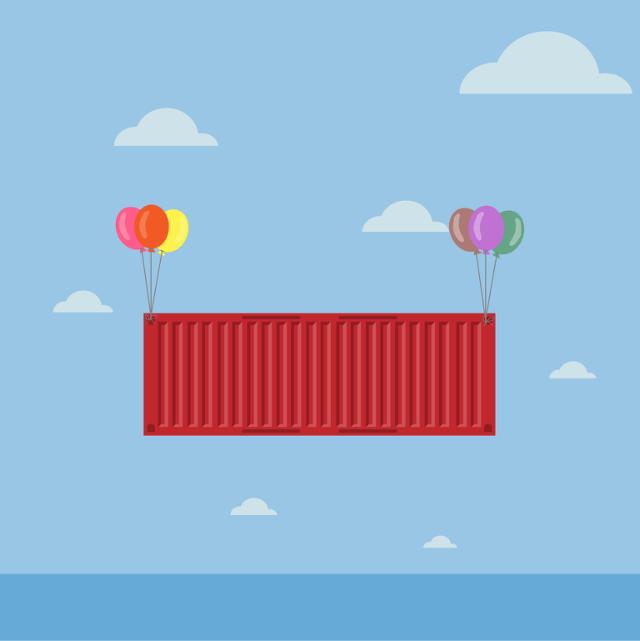Blog
Essential International Ecommerce Tips: Shipping
DynamicWeb
When your customer clicks that “Order Now” button in their shopping cart, that’s a successful conversion, but it’s not the end of the road.
When your customer clicks that “Order Now” button in their shopping cart, that’s a successful conversion, but it’s not the end of the road. The next step for e-businesses is to actually get the product to the customer. Shipping is a crucial part of online selling, and for international ecommerce, there are special considerations to be aware of.

Landed Costs and Your International Catalog
First, it’s important for businesses to know the landed cost of each product. The landed cost is the total sum of all costs for sending an order internationally. This includes freight, insurance, and potentially custom duties and other taxes.
With international ecommerce, you don’t have to offer your entire product catalog to all regions. The choice of what to sell is up to you. Some products may not make sense to ship across borders, and that’s okay.
Knowledge of the landed costs for your products helps you weigh the costs and benefits to make that decision. SMEs especially may choose to only offer internationally items that are small, light, and easy to handle.
International Warehouses: Pros and Cons
Some e-businesses that want to seriously expand in international territories opt to establish local warehouses to house inventory. Local warehouses empower companies to offer fast delivery once an order is placed. For example, Amazon, an international ecommerce giant, has warehouses all over the globe with the objective to leverage their sheer size as a competitive advantage.
In addition to raw speed and agility, the other advantages of establishing an international warehouse include a reduction of transportation costs and a shortened order cycle. Also, a larger local presence with faster delivery results in better customer retention.
The immediate disadvantage is obvious. Building a warehouse is a huge upfront cost. For those with recent expansion with international ecommerce, the cost could be prohibitive. The reduced cash flow from keeping stock in multiple warehouses also represents a drawback to establishing an international warehouse.
USPS, UPS, FedEx
Of course, international warehouses aren’t a necessity to ship internationally. Fortunately, there are plenty of shipping options right here in the United States. From the US Postal Service to UPS to FedEx, it’s best to learn the nuances and variations in policy and price among the different services.
When shipping your international ecommerce goods via USPS, the postal service does ship outside the country, but the host country eventually handles the product’s delivery to its destination. Also, if you get insurance through USPS, the host country’s mail system once again must be the one to make the agreement with USPS regarding handling and security. If the host country doesn’t agree to USPS’s terms, USPS will not offer the insurance. While USPS may be your least expensive option, keep these details in mind.
UPS and FedEx, on the other hand, may be more expensive as private carriers, but they deliver the product to its destination, rather than relying on the host country’s mail delivery. As for insurance, UPS and FedEx do offer insurance as well, but their coverage does not extend to all countries. Make sure to check before promising FedEx insurance to a customer in a country that FedEx does not cover.
Returns and the Customer Experience
An important and overlooked aspect of international ecommerce is shipping in reverse. What about when the customer has to ship to you? It’s very important to establish your return policy for international customers.
The costs for international products often run very high for the end customer. If the product is not satisfactory, customers get very angry when they have no recourse. Of course, there is a notable cost to you if they end up returning their purchase.
When it comes to international ecommerce returns, the classic dilemma of hassle and cost versus customer experience rears its ugly head. We recommend accommodating your customers as much as possible. Word-of-mouth, good reviews, and customer retention are all very important in all ecommerce, no matter what location.
Shipping, Overlooked
Although we’ve covered landed costs, product catalogs, three different mailing services, and return policy, we’ve only scratched the surface of shipping for international ecommerce. Shipping is an overlooked aspect of e-business, but it’s one that offers you a competitive edge in customer experience when you give the topic serious consideration.
When expanding your business across borders, it’s important to analyze the ways that you get your products to the end consumer. What shipping options to offer are up to you. Dynamicweb offers integration with a number of different services. And in our next blog as part of the Essential International Ecommerce Tips series, we cover the importance of how you get your website to the customer, wherever they are.